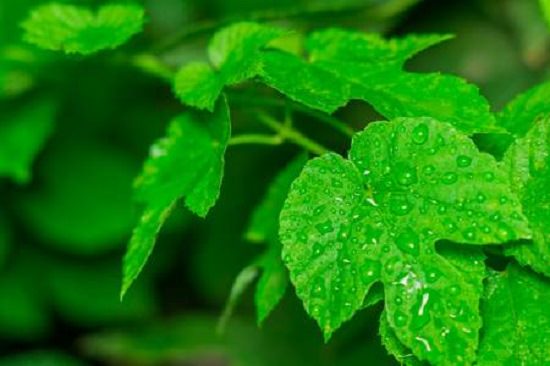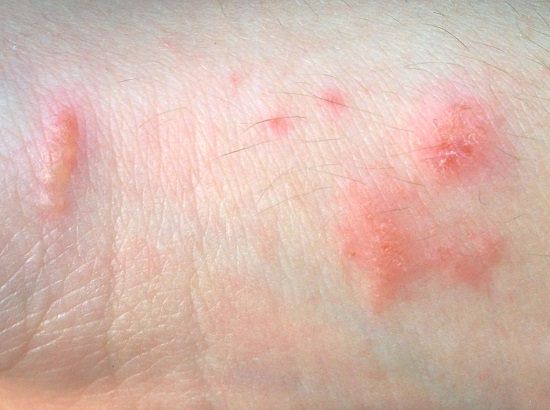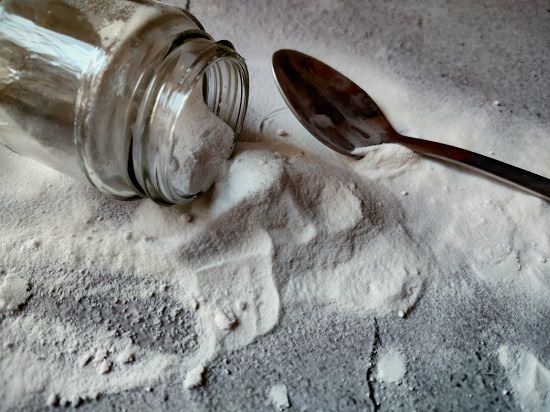Try a baking soda paste for poison ivy rash as an immediate home remedy for relief from the rashes. Read all about this dangerous plant in detail here.

The Poison Ivy plant grows throughout the United States except for Alaska, Hawaii, and the deserts of the Southwest. The plant grows as a vine in some parts of the country and as a shrub in the northern and western regions. It sometimes trails along the ground or grows as a climber on trees or poles. The plant’s leaf has three leaflets and changes color from green to yellow, orange, and then to red as the seasons change. The plant exudes an oily sap that irritates your skin when you come in contact with it. The risk of coming into contact with poison ivy is high for those who love outdoor activities during the spring and summer seasons.
The colorless, odorless, sticky sap is called Urushiol and is present in the leaves, stems, and roots of the poison ivy plant. Urushiol is also present in other plants such as the poison oak and the poison sumac, and contact with them causes the same type of reaction. The sap causes an allergic reaction (contact dermatitis), resulting in red, itchy rashes or blisters on your skin. Depending on the level of exposure and skin sensitivity, rashes can develop within hours of contact or appear several days later.
Ill-effects of the Poison Ivy
- You can remove the allergic sap from your skin with soap and water. However, you must do this within the first few minutes. This is because 50% of the Urushiol can penetrate your skin within 10 minutes. Once it gets into the body, washing your skin becomes ineffective. When the sap enters the body, your immune cells recognize it as an invader and attack it, causing the allergic reaction.
- The sap lingers on the plant even after the plant dies. When the plant is burning, the smoke from the burning oils poses a severe threat to those who inhaled it. Your lungs, ears, nose, and throat are at high risk, and symptoms might include nausea, vomiting, fever, chills, swollen lymph nodes, painful, swollen rashes, and respiratory difficulties. It can even be fatal in complex cases.
- As it remains on inanimate objects for a long time like your garden tools, clothing, shoes, or even on the fur of your pet, it is best to wash such objects if there is a possibility of their exposure to the poison ivy plant.
- The rashes are not infectious, and you cannot infect anyone else who touches you. You cannot spread the rash to other parts of your body by scratching them. Oozing blisters can sometimes form over the rashes, and they crust over as they heal.
Home Remedies to Treat Poison Ivy Rash

Disclaimer: None of the medicines are to be taken without the consult of a medical practitioner!
- Wash your exposed skin with soap and cold water within 5 minutes of contact.
- Wash all objects that may have come into contact with the plant, including your clothes, shoes, garden tools, gloves, camping equipment, etc.
- Keep your affected skin cool with cold water compresses for 15 to 30 minutes several times a day.
- Pets are not sensitive to poison ivy, but if your pet has rubbed against the plant, the sap can stick to its fur and irritate your skin when you touch your pet. So, if your pet has also been out with you, wash its fur with shampoo while protecting your hands with rubber gloves.
- If the itching and pain are too intense, you can try applying OTC topical corticosteroid creams.
- Creams containing zinc acetate, zinc carbonate, zinc oxide, or calamine lotion can dry your oozing blisters.
- Oral antihistamines such as Benadryl help relieve itching and help you sleep better.
- You can take prescription drugs like prednisone if the allergy is severe or if mucus membranes of the eyes, nose, or mouth are involved.
- Applying a paste of Baking soda or taking an oatmeal bath can treat your rashes if they are mild.
- Other remedies said to relieve itching are, rubbing alcohol, apple cider vinegar, witch hazel, aloe vera gel, banana peels, and cucumber slices.
Baking Soda Paste for Poison Ivy Rash

- You can add a cup of baking soda to your bathing water and bath or soak in it.
- Alternatively, you can mix three teaspoons of baking soda with one teaspoon of water to make a paste. Apply this paste on the rashes. It will cause the rashes to flake off naturally.
- If you have oozing blisters, mix two teaspoons of baking soda in 1 liter of water and soak sterile gauze pads in the mixture. Place the soaked pads on the blisters for 10 minutes at a time, four times a day.
When to Seek Medical Help?
- If you run a temperature over 100 degrees Fahrenheit.
- In case you develop pus in your rashes or blisters, it could be a bacterial infection, and you will need oral antibiotics.
- If the itching is too intense and keeps you from sleeping.
- The rash develops in your eyes, mouth, private parts, or is extensive, covering more than a quarter of your body.
- If your symptoms do not fade in more than two weeks.
- You develop breathing difficulties.
How do you Avoid Poison Ivy Plant Allergy?

When you are outdoors,
- Try to protect your skin by wearing long-sleeved shirts, full-length pants, shoes, and socks.
- Learn to identify the poison ivy plant by sight and avoid going near it.
- Keep the areas around your home free of these plants.
- Wash all clothing, tools, etc. after outdoor activity.
- Protect yourself from an unpleasant experience and go by the popular saying ‘leaves of three, let it be.’
